- Home
- Video Courses
- Certifications
- 350-601: Implementing and Operating Cisco Data Center Core Technologies (DCCOR) Dumps


350-601: Implementing and Operating Cisco Data Center Core Technologies (DCCOR) Certification Video Training Course
350-601: Implementing and Operating Cisco Data Center Core Technologies (DCCOR) Certification Video Training Course includes 143 Lectures which proven in-depth knowledge on all key concepts of the exam. Pass your exam easily and learn everything you need with our 350-601: Implementing and Operating Cisco Data Center Core Technologies (DCCOR) Certification Training Video Course.
Curriculum for Cisco DCCOR 350-601 Certification Video Training Course


350-601: Implementing and Operating Cisco Data Center Core Technologies (DCCOR) Certification Video Training Course Info:
The Complete Course from ExamCollection industry leading experts to help you prepare and provides the full 360 solution for self prep including 350-601: Implementing and Operating Cisco Data Center Core Technologies (DCCOR) Certification Video Training Course, Practice Test Questions and Answers, Study Guide & Exam Dumps.
Introduction
27. VRRP Lab
Let us perform the lab task. The same lab setup will go ahead and enable the VRP instead of the HSRP. So let me go and fix the screen. I have VRP, it's just IP enabled on routers one and two. So I can do this, no waiting; say ten like that. If I can do interface would be fast ethernet and ten. Then I'll go and remove the HSRP from R3 as well. So first of all I willgo and do the basic configuration. And once I do the basic configuration, then we'll go and do the load balancing configuration as well. All right, so here we are at router number one. We are on the correct interface. I can go and enable VRRP 10, and we can see what options we have. So I have this IP.Ten 11250. And that's it. Then we are IP Ten. What other things do we have? We can give the authentication, the print, priority,shutdown timers, track and track is event tracking. So here's what I can do. That VRRP ten and priority—those are the higher priorities. Then we can go check to see if we can show the VRP brief. So here you have the master, and we'll go to the other side. We can now make this IPS 10 11250. By default, priority will be 100. So you will see that you need to backup. If I go over here and check the priority, print, master, master address, and group address, we can see that he is the master. And if you go ahead and check, do show the VRP brief. So here's the backup. Okay, so here you can see the master address, and you can see the master address, and then you have the group address, et cetera. So it is working fine. There's no problem; it will work. Now, what we want here is for you to create two groups. For example, one IP will be two 50, and I'll create two 5, one R 4, and one group. R-five, I'll put you in another group. So I'll create two groups—ten and 20—and let's do that. So now what I will do is go to R-2. I already have the group that is this; whose priority is this? I will go and create one more. For example, 20. And the IP is ten 125 one. That is going to be the default gateway IP for the clients, and then the VRRP 20 The priorities say, for example, 50. So 150 and 50. Likewise, I'll go to R three and VRP 20, IPS ten, dot one, dot one, and VRP 20. By default, it will be 100. So we can understand this: that will be the master. Now we can go check, show VRRPbrief so you can see the backup master. And if I go here and check, you can see that master backup here. So it is working. One thing that we need to do is go to the client, and you should change the gateway address list. Each and every detail will be the same. If you want to see the VRP details, follow this link. Alright? So let's stop here. You can see that this is the way we can go and do the lab related to VRP.
28. LACP RSTP vPC start ....
We have completed one dot-one section. Now we are in section one two wherefirst of all we have to learn understandabout RSTP, LSP and VPC virtual portion. Now that I've done that again, we must learn how to go about implementing these protocols. But what I have done here is that I have created videos related to theory as well. So it will go ahead and start with the Ethereum channel and primarily focus on LSP. So the two videos are related to that theory and the lab. The following two videos will teach you about the RSTPrapid spanning creep protocol and its lab. So total four videos you will watch relatedto section one two, RSTP plus LSP. And then in the next section, I will go and start VPC. because VPC (virtual port channel) is a big topic. So, once again, I'll make five to six VPC-related videos. So please go and watch the coming four videos related to VP LSP 2 and RSTP 2. And then we'll go and start our VPC topic.
29. Etherchannel theory – LACP
We know that if a channel is something, we can bundle the interfaces to increase the overall throughput. As shown in the diagram, you have a core distribution and access layer. In general, we want to do this interface bundling or aggregation at the code level and the distribution layer in general. That doesn't mean that we can't do it at the access layer. We can do it as per requirement. So what we are achieving with either channel or port bundling is that we want to give much more throughput to whatever we have at this point of time when you are connecting the interfaces back-to-back. That simply means it's a very simple term. Let's suppose I have switch A and switch B. So let me try to draw here. Say, for example, one switch here and one switch there. If I have one gig interface, thenobviously the overall throughput is one gig. But you can take for example four interfaces and you canbundle and they can work as a four gig interface. So overall throughput will obviously increase and reach four gigabytes. Now, the important thing here is to understand that this four-gig interface is per application, which means that if you have only one application and you think that one application is getting four gigs of interface, that's not true. The algorithm mechanism behind the scenes is based on the assumption that if you have two interfaces, they will do the load balancing. So one gig and one gig will get load balancing, or one gig and one gig will get load balancing per application flow. That's the key thing we have here. When we do port bundling, it does not mean that this becomes a single four-gig pipe with four gigs of speed for all applications. It's not the same thing. All right. So we have different types of methodologies behind this, and we'll see that we have the LSP link aggregation control protocol and the Cisco proprietary PAG-P port aggregation protocol. But the moral of the story is that you're aggregating the port for higher throughput. Now we have to go figure out how to make this. If a channel or bundle we have option, wecan do it manually, we can do it dynamicallyas well manually when we are talking. So for example, I have two interfaces I can go to, and I can use this command interface range and then channel group one mode on, or maybe you can use some other number like 2030, 40, et cetera. So, when you use mode and on, we have several options. So for example, in LACP, we have options related to active, passive, and so on. So for example, if you are usingon this is a manual thing. Manually, you are turning on this LSCP protocol or channel protocol. Okay? When we run this command, what happens behind the scenes is that an automatic port channel interface is created. Now, for this port-channel-one interface that you are creating here, you have to go and write your logical configuration or you have to do the coding. So, for example, if I have interfaces 23 and 24, and I want to run commands related to switchport mode trunk and allow a specific VLAN, I must do so within the logical interface rather than over the member interfaces. So we should understand some of the technical terms. Here, I have a switch and two member interfaces, for example, 23 and 24. When you bundle these interfaces and you areusing manual method turning for example LACP on. So at that point of time, for example, the group you are using is one. So you're going to create an interface port channel. Here you can see port channel one, and whatever configuration you want to put over these interfaces, you should put here over the port channel, the switchport mode trunk, and allowed villain. We should put this in. For example, if you want to create a layer 3-port channel, you can go to the port channel, do no switch port, and then assign an IP address. Okay, so this is the manual way to dothe configuration, although we have the automatic way aswell and we have the protocol as well todo this, we'll see that in the upcoming slide. One important note here is that whenever we are creating the port channel among two, three, or four switches, obviously these are point-to-point to point configuration.So, whenever you create a port channel between two switches, So at that time, your speed duplex and other hardware-related properties should be the same. So what I'm telling you is that you are creating portions here; no problem, you can create it like that. You can create other port channel here. So, for example, numbers 10 and 20, etcetera. So these interfaces, for example, speed duplex, should be the same, correct? Otherwise, they will not form the port channel, and they will constantly throw an error as well. All right, so next we have a dynamic way to do the configuration. We have a link aggregation protocol. We have a port aggregation protocol. Now everyone is using LSP, even the flavors. Also, it is recommended that we learn to understand LSP, although if we learn one methodology, the second will come automatically. So I'm going to focus on the LSCP link aggregation protocol. This is a dynamic way to create the bundles. We have active and passive LSC modes. If both sides of a switch are active, they will form the port channel. If one side is active and the other is passive, they will form the port channel. If both sides are passive, then they will not form the port channel because no one is sending the LSP control package. So obviously both are the listeners for LSP, and they will not auto-negotiate the ether channel or the bundle. So here you can see that when you're doingthe LSP negotiation, when you are doing this automatically,so you can go to the interface channel protocol,you can define, then you have to go andgive the channel group name mode Active. Suppose one side I am using active,other side I am using passive. So they will go and form the port channel. It's very easy and straightforward. There is no such thing behind this. Now, we have some important things related to LCP. We can have eight interfaces inside a group, and eight interfaces can work as a backup. So eight plus eight are supporting a total of 16 interfaces that can form LSCP. But these eight interfaces are working as a backup. Now, who will work as an agent? That depends upon poor priority. By default, that will be 32768, and lower is better. Okay? Now, apart from that, we have other variables as well. Another variable is system priority. So suppose if you have to switch and whichswitch will take the active role and which willwork as a standby or secondary role. So who is the primary and who is the secondary? That depends upon the system priority. By default, that is also 32768, and lower system priority is better. So suppose this is 500 and this is 32768. So obviously he is the active initiator, and he has to take the decision. So by default, both will be the same. So, once again, if there is a tiebreaker, the lowest Mac address will always be preferred. So whoever switched to having the lowest Mac address will make the decision because we are not changing the port priority or the system priority by default. So as per the Mac address, the lowest Mac address in terms of system priority will be the lowest in terms of port priority. In case of a tiebreaker, the lowest port number will be in case of tiebreaker.Now, once you've done the configuration, you can go and check the Italian summary. That's a nice command. There you have the legends, or flags. For example, D for down P thatthey are in the port channel. I for "stand alone" is for "suspended," R for "layer three," S for "layer two," et cetera. So you have the legends, and you can check the status. So these devices sustain layers 2 and U, which stand for port channel and use. So this port channel is successfully formed. This is layer two, up and running. Okay. on a Cisco Nexus switch. Yeah, the syntax is a little bit different, obviously, in the catalyst switch and the Nexus switch, but the concept behind the scene is the same. So this way, we can go and create the port channel. There are some differences here. What is the difference between the port aggregation protocol and the link aggregation protocol? In the port aggregation protocol, we are using the modes auto and desirable. Desirable is equivalent to active, and I think there is some type of active here, so desirable is equivalent to active all right. So it's not a typo, but there are different use cases in the diagram, so manually you can do on either PGP or link aggregation protocol, and they will work now on one side while the other side does not form the channel; if that's true, then one side will automatically form the other side desirable, and they will form the port channel now. Here you can see that you have "auto," "let me write here," and "desirable," which is passive for LACP, for example. PAGP and this desirable is activeso if both side is desirable. They will form the port channel on both sides, but they will not form the port channel, as is the case with LSI that we have discussed earlier. These are the use cases and these are the scenarios we have that will work here to form the ether channel.
30. Etherchannel Lab LACP
Let us perform the lab task here in our lab, for example. We have switches, and these switches are examples: switch one and switch two. Their interfaces are on both sides. So we'll go and form the LSCP Port Channel. First we'll try to form with the manual method. Manual method means you can make this on andthen we will use the LSCP as well. Even we have option for PSEP as wellbut we'll focus on manual and LSCP. So let's go and do this. First of all, what I will do is set the default for the interfaces that we have, zero and one, because we have already done some configuration earlier and I don't want to do that here again because I don't want to have the old configuration. So I can go and default to the old configuration. Once I delete this, then I can go here, and I can take the range of e one.Let me type it. So zero, zero, and one, followed by the option of a channel group. So for example, in the channel group, you can see that the number is from one to 255. I'll take 100, and mode modeon means we're putting this on. We are turning this on. Now here we can see because this is the virtual device, so maybe we'll get some errors. so-called invalid group slot number, et cetera, et cetera. Let's go back and try to make it ten. Okay, so this is the problem with the virtual switch itself and not the problem with the actual hardware. So if I use ten, it takes the ten, and likewise, I can do one thing that shows an interface of 0. Let's copy and paste this configuration on the other side as well. So here is the interface range from zero to one, and then I can paste the configuration, or we can go to channel group ten or whatever we have. Let's see if we've made ten and turned mode on. So ten mode on Once you create this ether channel then we have optionthat we can go and check show ether channel summary. Now you can see that this stands for switched layer two and we stand for up. So we have this up and running, and ports are in the bundle if you want more information. So we have the option of ether channel, and then you have this option of detail, and you can go and check the load balancing method as well. So I can go ahead and check this detail as well. You can also check this information in great detail. So you can see all of the detail options that we are getting here. Now, this is the manual method. Now suppose I want to do this with the automatic or if I want to use any of the protocols. In that case, I should go to the interfaces first. We have the interface range, and then you can go and define the protocol. So this channel protocol is either LACP or PACP. That's a Cisco Propriety and industry standardbecause they are already in bundle. So we are getting this error. What I'll do is exit here, and I'll remove that group. Or maybe we can go here, and then we can remove that statement. So I'll do "no" here, and then I'll go and remove that statement from the other switch as well. So let's go to the range and paste this configuration there. All right, next, what can we do here if we want to give this channel protocol the name LSP? Then I can go and define the channel group. Take 20 as an example; you can see that the mode we have is active and passive for LSP auto and desirable for PGP. But I want active Assume you activate this side and the other side. I can go here and there again. I can go and type. The channel protocol is LSP. The next channel group is 20. Moderate is passive. So either it should be active or passive. So it will form the port channel. Now, if I go ahead and check the EtherChannel summary, I can see the EtherChannel summary. You can see that. Now we have this, and they haven't negotiated everything. So that's why it was showing as "suspended." Let's see what the actual code is here: waiting and SN. So here you can see that you have layertwo not in use and waiting for aggregation. So LSCP was not negotiated, and that's why it was showing that it was waiting. Now you can see that 20 has been formed and it is working properly. So this is the way that we can go and bundle the ports if you want to see more things related to this. So we still have the option of going to check the protocol and then entering. So here you have the LCP protocol. You have group 20 with mode enabled. So now we can go check this out. Now suppose we have some issue that keeps coming and coming and coming. So you have the option to do the debug for LSP. Once you do the debug for LCP, then you have to check to see who is the sender, who is the receiver, etcetera. Et cetera. Okay? So you need to understand that this debugging is working, and if you come here, I can debug events here as well, and you can go to comfortable and monitor. Let's see if I can monitor over the screen. Otherwise, I have to go and check the locks. If any problem is found, it will start sending these LCP-related negotiation problems that we can go and check. So I think the terminal monitor is the command console it already monitors. All right, now if I go here, do anytype of any type of issue will come. So let's see. And the channel protocol is P over GP. See if we create any issue here, and then, if we verify this, we can see some problems. I do one thing. No channel protocol LSCP Then you can go look at the debug. This is the way that we can proceed and verify the debug as well. Keep in mind that it is not recommended that you create the debug in the production network. You should have a maintenance window. Or if the issue is major, we can take CiscoTag online, and then you can do the email. Troubleshooting: a deep dive into troubleshooting.
31. RSTP Rapid Spanning Tree Protocol
So let's just start with RSTP, which stands for "rapid spanning three protocols." It's also very helpful that we know the other three protocols. Knowing http PBS TP PBSTP plus and then Rst and then Rhttp and then MST, for example, is advantageous. But I'm going to revise those spanning-tree protocols—at least the core behind the spanning-tree protocol methodology—to explain what exactly happens when we are talking about the switching network or switching architecture. So in that case, to prevent the loop we are running, actually use STP. If you have three nodes connected like this, like a triangle, then switch A, B, and C. As you can see, if you construct your network in this manner, you will undoubtedly find the loop, and frame will be looped across this triangle. Now again, you may wonder why we're creating networks like triangles or looped networks.
The answer is that for redundancy, we are creating this type of network so that it can provide us redundancy. So for the sake of redundancy, we are creating such a type of network. So for example, if one link is downstairs, you have one backup link, or maybe you have other links as well. So two links down, you have one link, etc., so for the sake of redundancy in a switched network or in a layer-two network, we are creating loops, or we are at least creating such a type of network design. Now the question is, "The second question may be okay since we are creating the loop, then what is the loop prevention mechanism, and then the STP?" The solution, which spans three protocols, is a loop prevention mechanism. What it is doing is that, as per priority, one of the switches will become root, and then obviously you have a second route and no route. But what is happening that whatever interfaces that is goingtowards the route they are termed as a root put. So you have rootport, route, port, and whatever interface is in front of the root port, all of which are referred to as "designated ports." So you have DP, and then you have RP. Now what about those switches where you have list priority? They are not roots. They are not secondary roots. In that case, they'll go check the priority and see who has the smallest Mac address. So one of the interfaces will treat it as a blocking port BLK blocking) and the other will treat it as a designated port. So this is the blocking port, and then you have a designated port. So the summary of this explanation is that since you have this type of arrangement, one of the interfaces is working as a blocking port, and if your main interface is down, still the traffic can go in this direction because from blocking, it will move to listening, then learning, and then moving to forwarding.
So it will take about 30 to 50 seconds to converge. And after that period of time, the traffic will no longer be blocked because it will finally become the forwarding port. Now, here, that's a problem that we don't want to useSTP rather than we want to use the rapid STP. We don't want to wait until this time to convert the network. And that's the solution: to use the rapid SDP. So let's see, that's one of the things we have in the rapid STP. This is under 8021 wrapping, spanning, and creep protocol. It's similar to STP butthere are dissimilarity as well. There are differences as well. We'll see. What are the differences we have? So BPD use here Also, you have breached the protocol data unit. You can think these are the control type ofmessages upon which the switches they are building theirSTP or they are building their RSTP. Here also, they will select one rootbridge as per the lowest bridge ID. That will be 32768. We will see that in the next slide. Then the router's designated ports are selected and functionally identical to STP. These are the similarities; what is not similar You can see that here we have a routeport, an alternate port, a designated port, and a backup port. On the other hand, in STP you have a root port, a designated port, and a blocked port. So let me show you the diagram. It's always easy to understand with respect to a diagram. Here you can see that you have the lowest priorities, priority 100, who will become root nodes. So this guy and this are with respect to STP, and this is with respect to RSTP. So this guy is the root whatever going towards the root bridge, which is rootport. There, you can see these are the root ports.
And then, as per the high priority, one will become a block and one will be the designated port. If you have any issue in this direction, then it will move to the forwarding state and the bracket will flow like this, right? On the other hand, you can see that in RHDP, he is the root of the problem. For example. So these are the root pods. We have a designated port, just like STP. But instead of blocking here, you can see that you have an alternate port. And if you have two link so one link is designatedport, another one is the backup for the designated port. So instead of blocking, we have an alternate port inside RSTP. And that is one of the reasons for faster conversions. But there are other reasons as well. Here you can see that instead of blocking, listening, learning, and forwarding, we are discarding learning and forwarding places. So we are not waiting for that particular amount of time but rather moving to the forwarding estate as soon as possible. as quickly as possible. Initially, a switchboard starts in a discard state. Obviously, he has to start learning. Now, a discarding code will not forward frames or learn Mac addresses, as the name suggests. A discarding port will listen for reproduce, alternate, and backup ports and will remain in the discarding state. So you have your alternate and your backup port.
They are still listening, but they are not actively participating. So they are listening. They are listening and listening. Otherwise, failure will happen. how they will start forwarding the frame. So they are not in the forwarding estate, but they are still listening to the BPD. Now RSP does not need a listening estate. Instead, if the port is left as a root or designated port, it will transition from discarding to learning. So here, you can see that. Now if you have route selection, in that case, the port will move from the discarding to the learning state. Now what will happen? In this case, a learning port will begin to add Mac addresses to the CAM table. However, a learning port cannot forward frames still.So here you can see that you have three states: in discarding, you are listening, in learning, you are starting to learn the Mac address, but in discarding, you're not forwarding the packet unless you reach the forwarding mode. Finally, when you reach the forwarding estate, it will send a message for BP to learn packages and forward the frame, route, and designated port, which will eventually transition to a forwarding estate. So, once you've decided on the ports (root port, designated port, alternate port, and so on), they will move from the discarding landing to the forwarding estate. Now the main question here is: why? RSTP has faster convergence, and now you will see the core difference between STP and RSTP. Why? So BPDs are generated by every switch and sent out as a hello interval. Switches no longer require an artificial forward delay timer.
Now what is happening in this case is that all the switches are generating their own bridge protocol data, which they are forwarding to their peer switch. Now what is happening in STP? STP code is eight two.In STP, BPDs are generated by the root bridge. Now if the switch receives a BPD from the rootbridge on its root port, it will propagate the BPD to the downstream or its neighbor. This convergence process is slow, and STP relies on a forward delay timer to ensure a loop-free environment. So now you can understand that rather than using our STP switches, they are generating the BPD and sending it to the neighbor. But in STP, which is eight and two, you have one route port or you have one route bridge election, one of which will become the higher authority. And then he will generate the BPD, and all the downstream switches will listen as per their delay timer or as per their timer. So you can see here that the default nature of STP is slow when compared to RH TP. Now in RSTP, switches will handset directly with their neighbors, allowing the topology to be quickly synced. This allows the port to rapidly transition from the discarding state to the forwarding state without delay.
So you have a one-to-one handshake, and then from discarding it, it quickly moves to the forwarding state where they want to forward the packet. Again, we have some port types in RSTP. We have edge ports. And suppose, if you know at this point in time about portfolio, that portfolio is one of the very popular terms that means that whenever you are connecting the switch with the terminating device, for example, a server, you don't want to send the BPD. So I don't want to send BPD or an STP control package to the device that is a non-switch, which is not a switch. There is no meaning in that. So that's the reason this particular interface weare making this interface as a portfolio meansquickly it will go to the forwarding state. Likewise, the edge. Now, this edge port is working as a portfolio. Immediately, it is going to the forwarding state. So there is no listening, learning, and forwarding like in STP, and there is no discarding, learning, and forwarding like in RSDP. However, it will be transferred to the forwarding estate immediately. Now, second portfolio, you have the root. Root ports are connected with other switches and have the best path cost to the root pitch. Obviously, we know the root port is there. That is one side you have routeport, other side you have designated port. So you can reach quickly to the root pitch.
And then finally, you have a point-to-point port. What this point-to-point port is doing is providing a port that connects to other switches with the potential to become the designated port for a segment. so it can become DP. And now, if you go and refer to the actual diagram that we have here, you will understand. So you have a rootport that is going towards the root pitch. And here you can see the adjacent root port as the designated port. The designated port adjacent is rootport. But here you can see that you have a designated port and a backup port as well. All right, finally, we have some important notes here related to RSVP. So let me quickly cover this. Now, if an edge port receives a Bpdu, it will lose its edge port and status and transition to normal through the RSCP process on the Cisco switch. Any port configured with a portfolio becomes the edge board. We know that the edge board—I already explained this is a portfolio—quickly moves to the forwarding state. That's the summary for the edge port. Now, the Rhett Convergence Process is below. So let's quickly understand the convergence process of RSTP and why it is converging so fast. We also discussed this on the previous slide. So let me quickly revise this. Switches are now exchanging Breach Protocol dataunits in order to select the root breach. This is valid for all these fans of a protocol. Edge ports are no longer in the "forward" state because they are nothing more than the portfolio. All potential routes and point-to-point ports start with a discarded estate. So this is actually important. By default, the ports will start with a discarding state. Correct. because they are actively listening to BPD. They are not learning the Mac addresses. They are not following the frames. They are learning.
So you can think about this. It's not learning; actually, they are listening. So you can think of this as a listening active listener.Then, if you receive a superior BPD, it becomes a root push and transitions immediately to the forwarding estate. Obviously, you will progress to the next state after learning the BPD. Superior means that if you only get one BP per day, what happens? All the switches are generating their own BPDs, and they are exchanging them. So suppose this switch has a low priority (32768), the default priority. Suppose this has priority 32769; he has 686, which is not a valid number. just for example. So obviously, when he received the PP2, he understood I was getting this with the higher or superior switch. And then this will become this particular point-to-point interface, which will become the forwarding estate. Okay? for point-to-point codes, each of which will exchange a handshake proposal to determine which port becomes the designated. Obviously, you can do the handshake, and you have to define who is the designated. It's okay. Once the switch agrees, the designated port moves immediately into the forwarding estate. As you can see, the convergence is slightly different than in SCP.
So ports are starting with the discarding estate, and then they are moving to the forwarding estate. It will become the root port once you obtain some superiorBpd. So, keep in mind, if he's the root bridge, you're the root put and he's the DP, okay? So if he is sending the BpDU, it will be a superior BpD. Correct? And when he is sending the BPD, it's not a superior BPD. So that's why it is saying that it will move to the forwarding state. because you have only one blocking type of office rate. That is the discarding. You'll be in London either way, or you'll beat the forwarding and end up at the discarding. But there are fewer chances that, when you have a superior BPD, you are in the discarding state. All right, so this is a summary for the RSTP convergence. Now, every switch will perform this handset process with each of its neighbours until all the switches get synced. Complete convergence happens very quickly—within the second. So all the switches are sending their Bpdu, and then when they switch, they are calculating based on Bpd and the superior Bpd. Whoever is sending the superior BPD has become the root bridge, and his interface will become the designated port. The adjacent port will become the root port. Because he has to reach the superior bridge, based on that, all the switches will converge once they sync. Once they sync, RSP will be up and running for all the switches, and then it will take a few seconds. And that's why it's.
Student Feedback
Download Free Cisco DCCOR 350-601 Practice Test Questions, Cisco DCCOR 350-601 Exam Dumps
| File | Votes | Size | Last Comment |
|---|---|---|---|
| Cisco.testkings.350-601.v2024-02-20.by.lijun.109q.vce | 1 | 872 KB | |
| Cisco.braindumps.350-601.v2020-03-18.by.jessica.108q.vce | 3 | 827.24 KB | Oct 05, 2020 |
Similar Cisco Video Courses













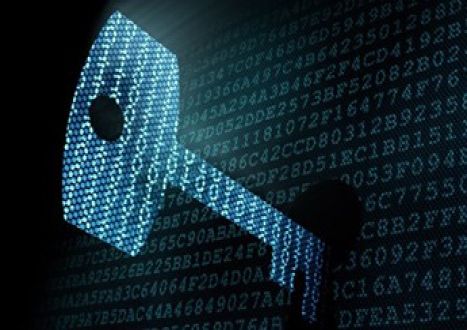






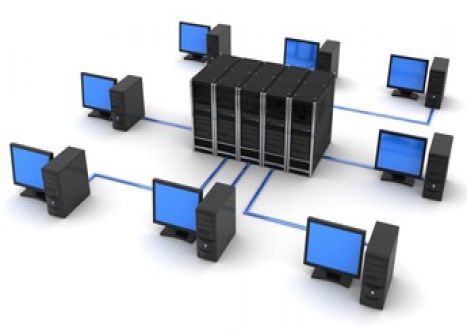









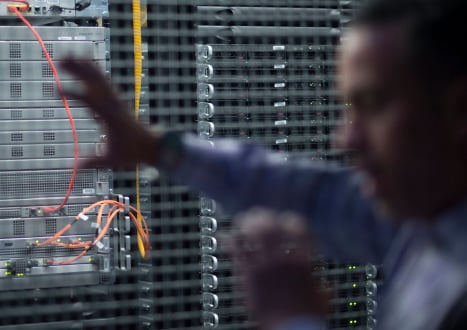

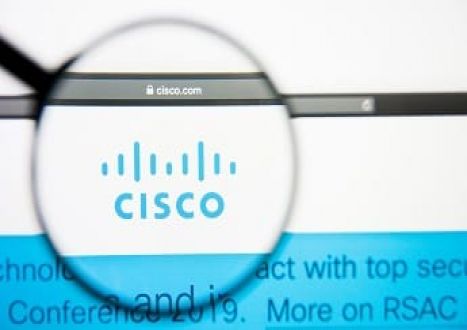

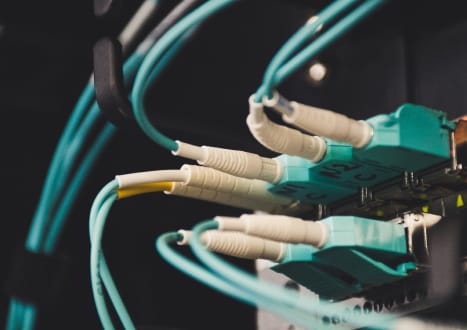

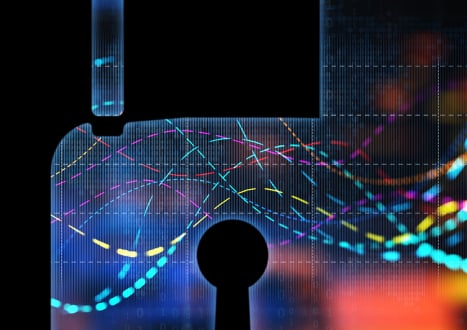

















Only Registered Members Can Download VCE Files or View Training Courses
Please fill out your email address below in order to Download VCE files or view Training Courses. Registration is Free and Easy - you simply need to provide an email address.
- Trusted By 1.2M IT Certification Candidates Every Month
- VCE Files Simulate Real Exam Environment
- Instant Download After Registration.
Log into your ExamCollection Account
Please Log In to download VCE file or view Training Course
Only registered Examcollection.com members can download vce files or view training courses.





Add Comments
Feel Free to Post Your Comments About EamCollection's Cisco DCCOR 350-601 Certification Video Training Course which Include Cisco 350-601 Exam Dumps, Practice Test Questions & Answers.